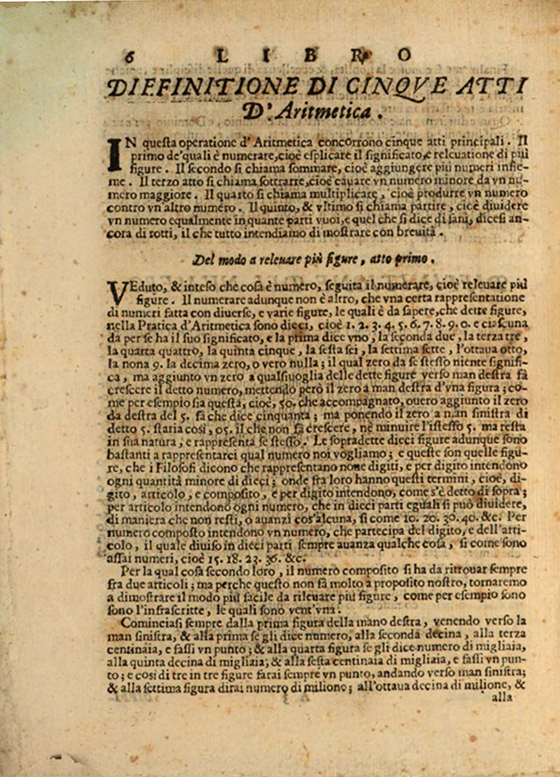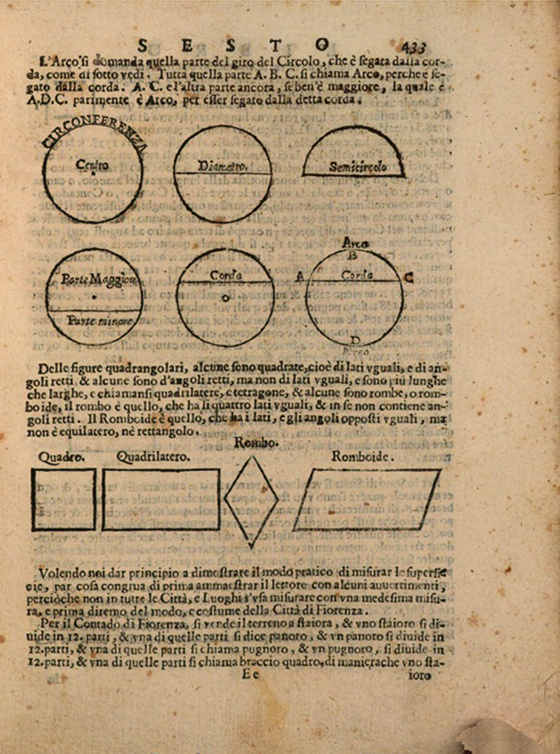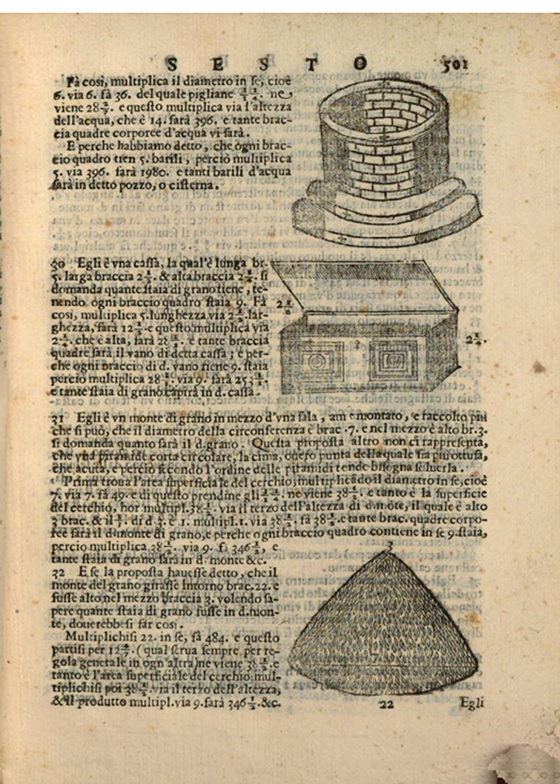- About MAA
- Membership
- MAA Publications
- Periodicals
- Blogs
- MAA Book Series
- MAA Press (an imprint of the AMS)
- MAA Notes
- MAA Reviews
- Mathematical Communication
- Information for Libraries
- Author Resources
- Advertise with MAA
- Meetings
- Competitions
- Programs
- Communities
- MAA Sections
- SIGMAA
- MAA Connect
- Students
- MAA Awards
- Awards Booklets
- Writing Awards
- Teaching Awards
- Service Awards
- Research Awards
- Lecture Awards
- Putnam Competition Individual and Team Winners
- D. E. Shaw Group AMC 8 Awards & Certificates
- Maryam Mirzakhani AMC 10 A Awards & Certificates
- Two Sigma AMC 10 B Awards & Certificates
- Jane Street AMC 12 A Awards & Certificates
- Akamai AMC 12 B Awards & Certificates
- High School Teachers
- News
You are here
Mathematical Treasure: Forestani's Arithmetic and Geometry
Lorenzo Forestani (d. 1623) was an Italian Catholic priest of a Franciscan order. Little else is known of him, but obviously he knew mathematics and was probably a teacher of the subject. His comprehensive book, Pratica d’arithmetica e geometria, published in 1603 and containing 550 pages, is an example of good pedagogical practice: the writing is concise, illustrations strategically employed, explanations thorough, and problem situations colorful. His solution of the “points problem” to produce a fair distribution of gambling winnings is noteworthy. The following images are from a 1682 edition.

An introduction to the five operations of arithmetic:

Groupings by tens in numeration are demonstrated through “millions of millions”:

A diagram helps explain multiplication by the “chain rule”:

The concept of a fractional fourth is graphically explained:

The division of common fractions is discussed with the use of illustrative problems:

The sixth book or section is on geometry. It begins with a concise set of definitions.


Polygonal dissections lend themselves to land measure.

The quadrature of the circle is given a detailed discussion:

A brief consideration of solid geometry ends with real world applications.

The seventh and last book of the work focuses on the mathematics of surveying. Various practical situations are illustrated and discussed.




The images above were obtained through the courtesy of the University of Michigan via the HathiTrust.
Frank J. Swetz (The Pennsylvania State University), "Mathematical Treasure: Forestani's Arithmetic and Geometry," Convergence (February 2020)




